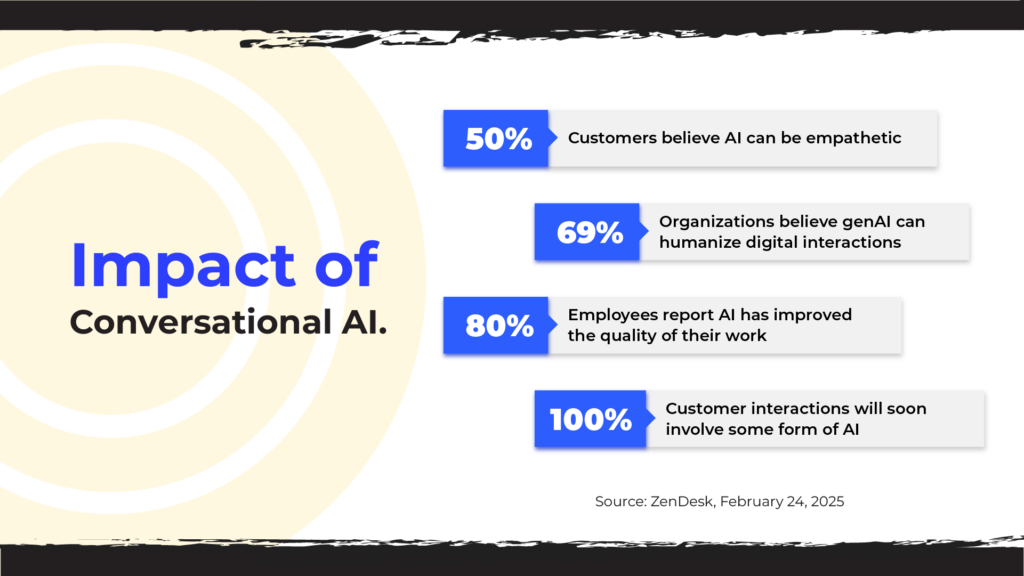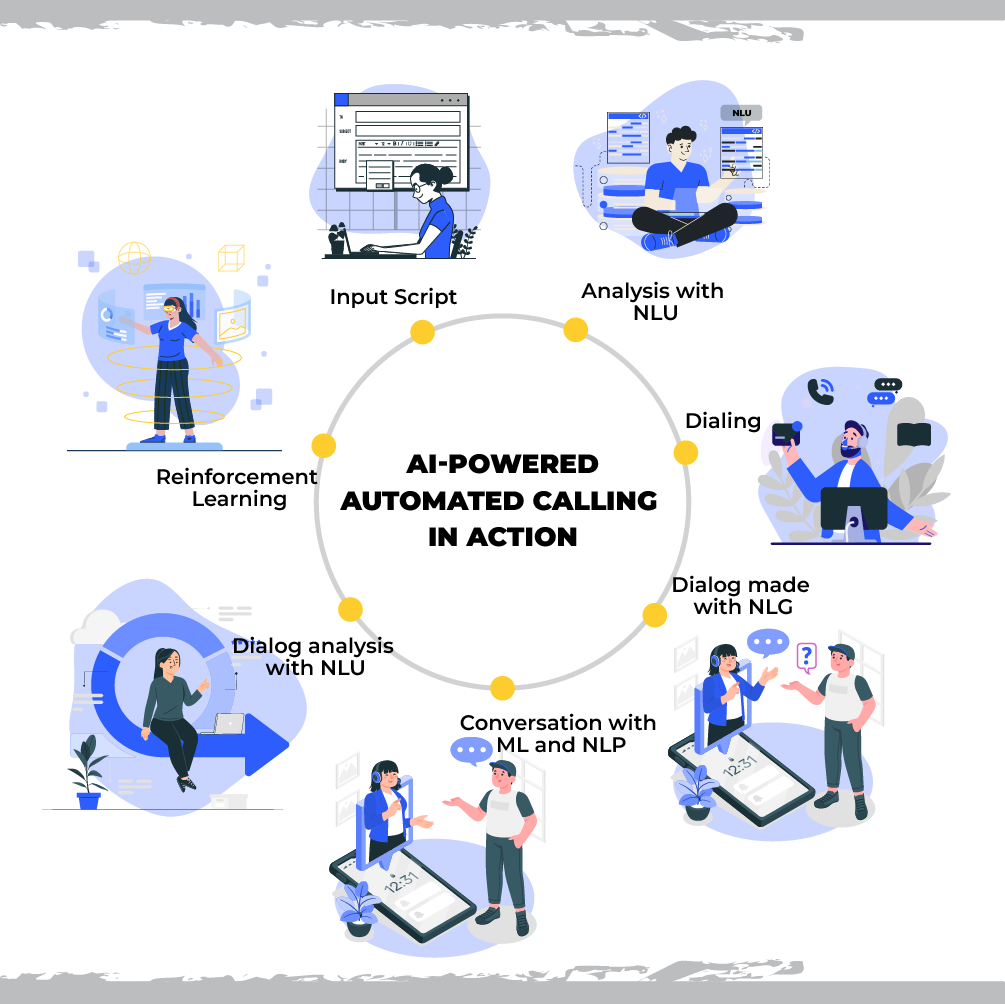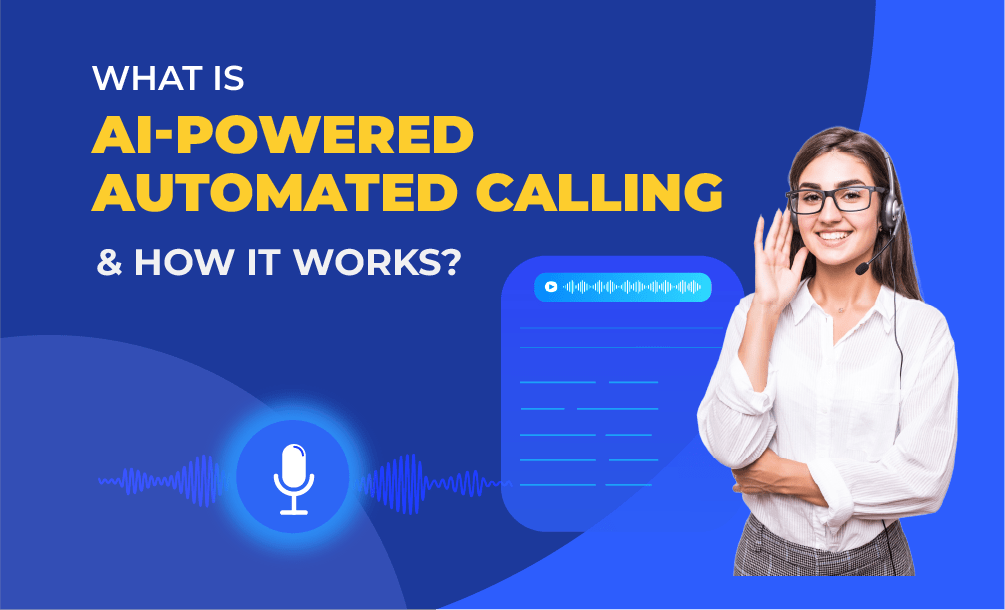Conversational AI has completely changed the game.
While people may say they don’t want to talk to a machine, their behavior with AI says otherwise, considering:
- ChatGPT averages 123.5 million daily active users, and processes over one billion queries a day, according to their most recent reports.
- 87%+ of consumers report positive or neutral interactions with chatbots. (Ecommerce Bonsai)
- And 82% of consumers would rather use a chatbot if talking to a person required waiting, per Tidio. (Up 22% from just 2022.)
Through the combination of enormous datasets, sophisticated autocompletion, and advances in affective computing, these systems keep getting better at understanding and anticipating what people want.
Pair that with multimodal capacities for audio and video, and it’s easy to see why AI automation has changed the way businesses handle calling.
Reports, from The New York Times and Washington Post through to Wired and the MIT Technology Review all highlight how people have even fallen in love with chatbots, and while these may be extreme cases, the bottom line is this: conversational AI works.
It’s not right to say a revolution is happening with AI in customer service in 2025, because the truth is: it’s already happened.
In this article, we go back to the beginning, covering what AI-powered calling is, how it works, and how it’s redefined communication for businesses in 2025.
Reaping the Benefits of AI-Powered Calling
“AI-powered automated calling” is a catch-all for conversational AI solutions to a business’s telephonic communication problems, whether inbound or outbound.
These platforms can make or field calls entirely without human intervention, combining conversational AI with advanced data processing.
They allow AI to share information, upsell and re-connect, gather customer insights, pre-screen candidates, prospect for potential clients, and even do administrative work like scheduling.
They’re already being deployed across businesses and departments to do the heavy lifting, freeing teams and individuals to focus on higher-value tasks.
AI-powered calling is bringing companies greater:
- Efficiency: Exponential cost reductions
- Scalability: Making hundreds to thousands of calls simultaneously
- Personalization: Tailored calls utilizing business data
AI calling automation is driving real business benefits- increasing productivity, revenue and operational efficiencies:

Conversational AI Technology: The Mind Behind the Call
So, what is ‘Conversational AI’ exactly?
Let’s look at how it works and why people find it so engaging.
How It Works
Conversational AI reduces language into tiny pieces that can be transformed, analyzed and processed by computers.
AI-calling relies on several things working together to fully parse human language, like:
- Powerful Data Processing: It all begins with those massive datasets of human language. This is processed so queries and responses are understood with context, intent, and sentiment. That allows on-the-fly adjustments to emulate human communication.
- Natural Language Understanding (NLU): This is part of Natural Language Processing (NLP) and how AI parses speech. It identifies keywords, context, and even emotional undertones, to assist with interpretation. For example, if a customer says, “I need help with my bill,” the AI recognizes “help” as intent and “bill” as subject.
- Natural Language Generation (NLG): With meaning registered, the system is ready to make the response. Unlike old calling automation systems that needed pre-recorded messages, NLG makes customized dialog that fits business goals and the context of the conversation.
- Voice Synthesis: With the response words selected, AI converts it to audio, giving it a natural-sounding tone and demeanor. Advanced systems go further, using neural voice synthesis, to mimic human inflection and tone even more effectively.
- Machine Learning Algorithms: While the above elements are all fine and well, it’s not much good without continual improvement. What makes AI calling systems so powerful is the capacity they have to adapt and keep adapting from each and every interaction. Machine learning refines accuracy and applies this learning to each new scenario. In other words: the more they’re used, the better they become.
Here’s an example of a typical flow:

Conversational AI vs Interactive Voice Response (IVR) Systems
Traditional calling automation systems like IVR waste our time by making us wait through long menus, don’t hear us correctly the first time (maybe ever), and never budge from their programming.
And even after you do all that waiting and cringe through misheard choices, you typically still end up on hold to get to a person who can actually do what you called to get done in the first place.
Maybe you’ve had similar experiences with Siri and Alexa too (pre-AI).
Conversational AI has changed this game entirely.
Instead of rigid channels, it brings natural exchange. Instead of listening to options that aren’t quite right, you get your need met or even exceeded on the first go.
Conversational AI allows for:
- Natural Conversational Interactions: Just talk to it and tell it what you need. It’s that easy.
- Contextual Understanding: Maybe you don’t know what you want, and they can handle open-ended queries, too. That means switching seamlessly between topics, adjusting speed and even, in the best solutions, directly transferring calls to human agents when needed.
- Dynamic Responses: The AI gives personalized dialog every time, in real time.
Affective Computing: Adding AI Empathy in Customer Interactions
Affective computing techniques take this all to the next level. As a field of study that merges computer science, cognitive science, and psychology, it helps give machines the ability to interpret and adapt to human emotions.
By analyzing tone of voice, word choice, pace, volume, and context, these approaches empower systems to adapt their responses to a user’s emotional state.
Why Empathy Matters
Just like in life, between real people, empathy aids trust and improves communication. And no, AI doesn’t have real empathy, but the best conversational AI systems successfully emulate it, by:
- Using a calm, reassuring tone to de-escalate frustrated callers.
- Using positive, enthusiastic language to enhance sales calls.
- Adjusting call endings based on need.
- Speeding up or slowing down and clarifying based on perceived understanding.
Pete & Gabi: AI-Powered Automated Calling
Now we bring it all together.
Pete & Gabi takes all this, the best from conversational AI and affective computing techniques, and joins it with innovations we’ve made to take it to the next level.
With more than four years and hundreds of thousands of hours spent in development, it’s been put through the paces, learned by doing, and fine-tuned through interactions with thousands of users.
We added things that we found lacking in the industry, like live call transfers, the capacity to work across a multitude of use cases, easy integration with existing systems, and all within a single, scalable platform.
Enhanced Customer Experience
By combining conversational AI with affective computing techniques, Pete & Gabi is already giving customers great experiences, by better understanding what they need and how. Helping our clients shine in the eyes of their customers.
Increased Productivity
Our AI assistants take the repetitive work, freeing your team to focus on complex or high-value tasks. We call at scale and only involve your team when they’re needed to close the deal.
Easy Integration
Pete & Gabi is easy to use and integrates easily with your tools and teams. While it’s highly customizable, it can also be on its feet at your organization in just days.
Conclusion
We opened by saying conversational AI has already changed the game, and one area it’s paying direct dividends is with AI-powered automated calling.
AI assistants are now transforming the customer experience across every industry. From streamlining operations and scaling outreach to delivering personalized, empathetic experiences at scale, the benefits are undeniable.
So, why are you not yet using AI calling automation?
Take a look at Pete & Gabi and avoid getting left behind.
FAQs
How does AI-powered calling differ from traditional IVR systems?
Traditional Interactive Voice Response (IVR) systems are built from pre-recorded messages with rigid menus. They listen for keywords and require users to pick from preset options.
Conversational-AI driven responses use natural language processing (NLP) to engage in more free-flowing conversations, delivering on-message responses, but are also personalized, and flexible to a recipient’s needs.
The best systems also allow transferring to live agents and recognition of a person’s mood or tone, enabling on-the-fly adjustments.
How do businesses benefit from AI-powered automated calling?
The true benefit is the effect on a business’s bottom-line, through exponential cost savings per call, increases in revenue, and efficiencies in operations.
But AI-driven, human-like calling systems also improve quality, consistency, reach (linguistic options and 24/7 availability), and scalability of calls over traditional solutions.
How does AI-powered calling improve the customer experience?
AI-powered platforms elevate customer interactions by providing a flexible, personalized interaction that not only meets the customer’s needs, but provides an experience that matches the customer’s mood.
For customers who are in a hurry, they can cut right to their need without waiting through menus to find the best choice or navigating a fixed system only to have to wait on hold for a human.



